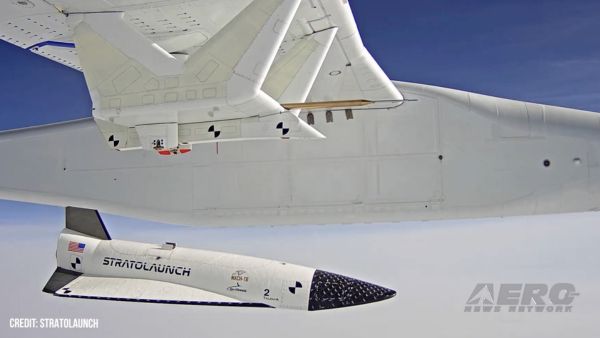GMI Instrument Is The Calibration Standard For The Entire GPM Constellation To Improve Understanding Of Precipitation Patterns Around The World
The Global Precipitation Measurement (GPM) Microwave Imager (GMI), designed and built by Ball Aerospace for NASA's Goddard Space Flight Center, is entering its fourth year of service. Designed as a 3-year mission, GMI has performed successful operations on orbit while exceeding its performance requirements. The GPM spacecraft that hosts the GMI instrument is a joint effort between NASA and the Japan Aerospace Exploration Agency (JAXA) to provide frequent, near-global precipitation information critical for improving weather forecasting and protecting lives and property.

"Ensuring mission success and good value for programs is how we help our customers go beyond," said Rob Strain, president of Ball Aerospace. "The GMI instrument is a perfect example of this, as it has surpassed its design life and continues to deliver valuable science and weather data."
The GMI instrument is a multi-channel, conical-scanning, microwave radiometer serving an essential role in the near-global-coverage and frequent-revisit-time requirements of the GPM mission.
"NASA's Global Precipitation Measurement mission is improving our understanding of precipitation patterns around the world, and it will continue to do so well into the future," said Chris Scolese, director of NASA's Goddard Space Flight Center. "The GMI now serves as a reference standard for calibrating precipitation measurements in the GPM constellation."
Ball designed, built and tested GMI, and provided pre- and post-launch support for the instrument. GMI's high-frequency channels measure small particles of ice, snow and rain in the atmosphere. When combined with the JAXA-built Dual-Frequency Precipitation Radar instrument, these instruments provide comprehensive data to produce global rain maps and climate research data products. GMI enables the core spacecraft to serve as both a precipitation standard and a radiometric standard for the other spacecraft in the GPM constellation. By serving as the calibration standard in the GPM constellation, Ball's GMI instrument is helping to ensure the accuracy and precision of other instruments.
For more than five decades, Ball Aerospace has designed and built weather and environmental spacecraft and sensors to provide actionable intelligence to civilian and military weather forecasters. GMI's design is based on proven Ball-built microwave sensors, including the Shuttle Radar Topography Mission (SRTM), Spaceborne Imaging Radar-C (SIR-C), GEOSAT Follow-On (GFO) and the Submillimeter Wave Astronomy Satellite.
Ball has played key roles on numerous national and international programs that make critical measurements of the physical environment. These include designing and building the spacecraft for the next-generation Joint Polar-orbiting Satellite System-1 (JPSS-1), designing and building the spacecraft for the Suomi National Polar-orbiting Partnership (Suomi NPP), and building the CloudSat spacecraft. Ball also designed and built the Ozone Mapping and Profiler Suite (OMPS) instrument aboard Suomi-NPP, and a second OMPS that will fly on the JPSS-1 weather satellite, as well as the polar follow-on missions. Ball also built the LIDAR and wide-field camera instruments, the communications equipment, and integrated the payload for NASA's CALIPSO satellite program, which has orbited the Earth more than 43,000 times in its nearly 11-year history as it studies how clouds and aerosols impact the Earth's climate.
(Image provided with Ball Aerospace news release)
 ANN's Daily Aero-Term (05.05.25): Circle To Runway (Runway Number)
ANN's Daily Aero-Term (05.05.25): Circle To Runway (Runway Number) ANN's Daily Aero-Linx (05.05.25)
ANN's Daily Aero-Linx (05.05.25) NTSB Prelim: De Havilland DHC-1
NTSB Prelim: De Havilland DHC-1 Classic Aero-TV: The Boeing Dreamliner -- Historic First Flight Coverage
Classic Aero-TV: The Boeing Dreamliner -- Historic First Flight Coverage Airborne-NextGen 05.06.25: AF Uncrewed Fighters, Drones v Planes, Joby Crew Test
Airborne-NextGen 05.06.25: AF Uncrewed Fighters, Drones v Planes, Joby Crew Test



